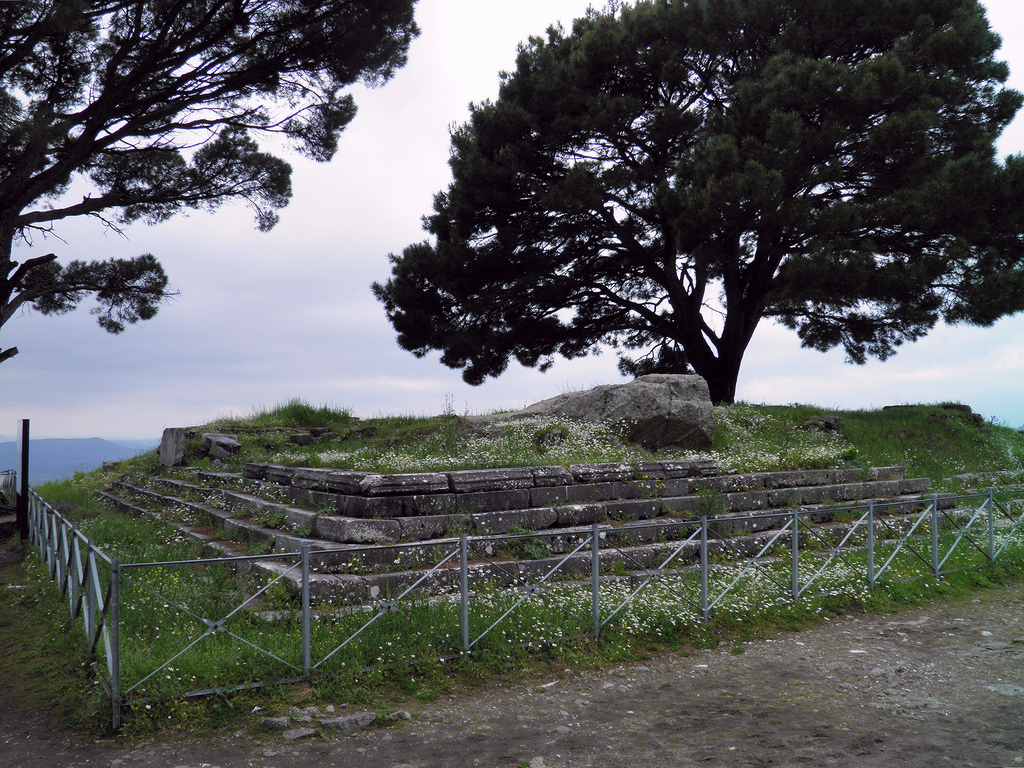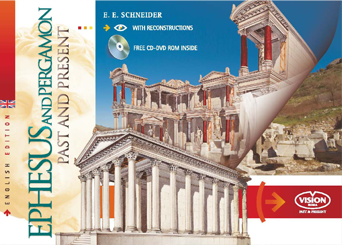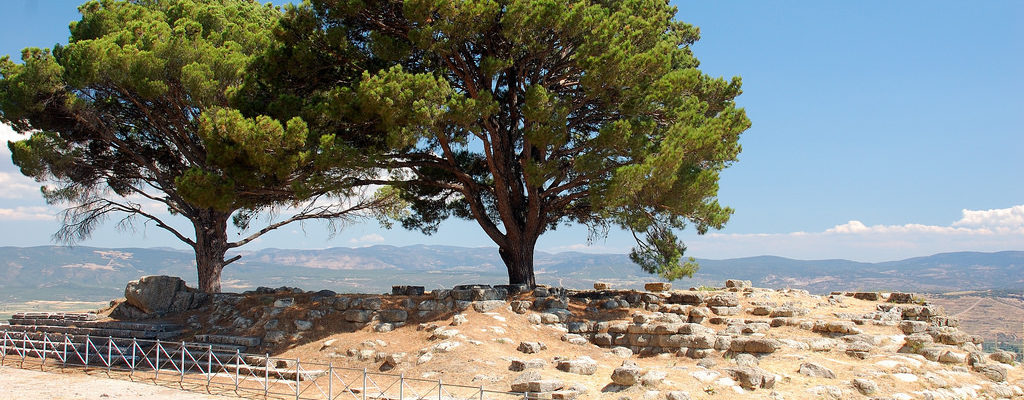The Altar of Zeus stood on a large terrace measuring 36.44 x 34.20 meters, and is the largest known Greek altar.
Only a few traces remain on-site today: the altar was completely rebuilt, complete with its original reliefs, at Berlin’s Pergamon Museum in 1959.
A high raised base set atop five steps, over another tall base and with projecting cornices, it is decorated in high relief with scenes depicting the Gigantomachy, the mythological battle between the gods and the giants, the symbol of the victory of the Attalid kings over the Galatians, the victory of civilization over barbarity.
It thus had the same political-celebratory nature as the temenos of Athena. The raised base, on the western side, forms two avant-corps delimiting a large 20-meter staircase leading to a paved courtyard.
On the raised base and in front of the staircase runs an elegant Ionic colonnade, the back wall of which is adorned with a frieze depicting scenes from the life of Telephus, the hero who founded Pergamon.

© Photo credits by Carole Raddato under CC-BY-SA-2.0
The altar was dedicated by King Eumenes II to Zeus and Athena Nikephoros, and its construction probably took place between 181 and 159 B.C.; it was almost entirely completed when the plan was changed and it was decided to build a high podium around the portico wall, almost 100 meters long, to receive votive offerings.
The frieze with the Gigantomachy was made up of more than 100 slabs: numerous sculptors took part in its making, but the composition is unitary and this is certainly thanks to a single supervising mastermind who conceived the epic battle between the gods and the giants as a cosmic event in which all the creatures of the sky, earth, sea, and Olympus take part.

Do you want to know more about the history of Ephesus and Pergamon?
Check out our guidebook to Ephesus and Pergamon, with detailed history and Past & Present images of their greatest historical and archaeological sites.

